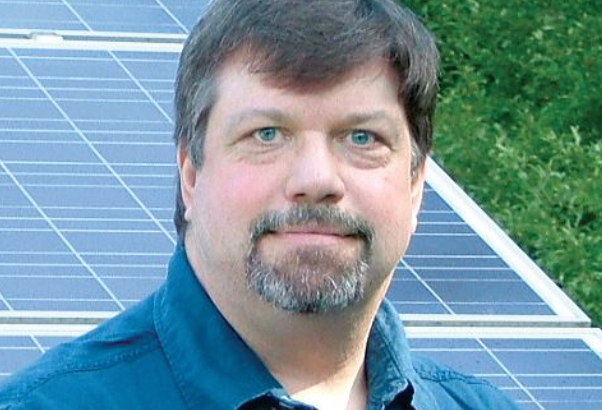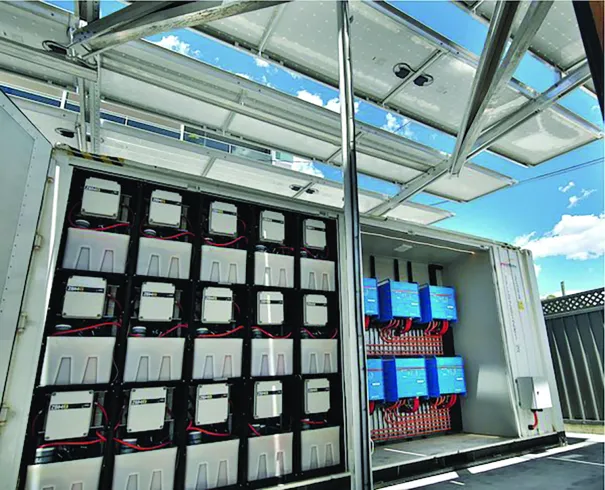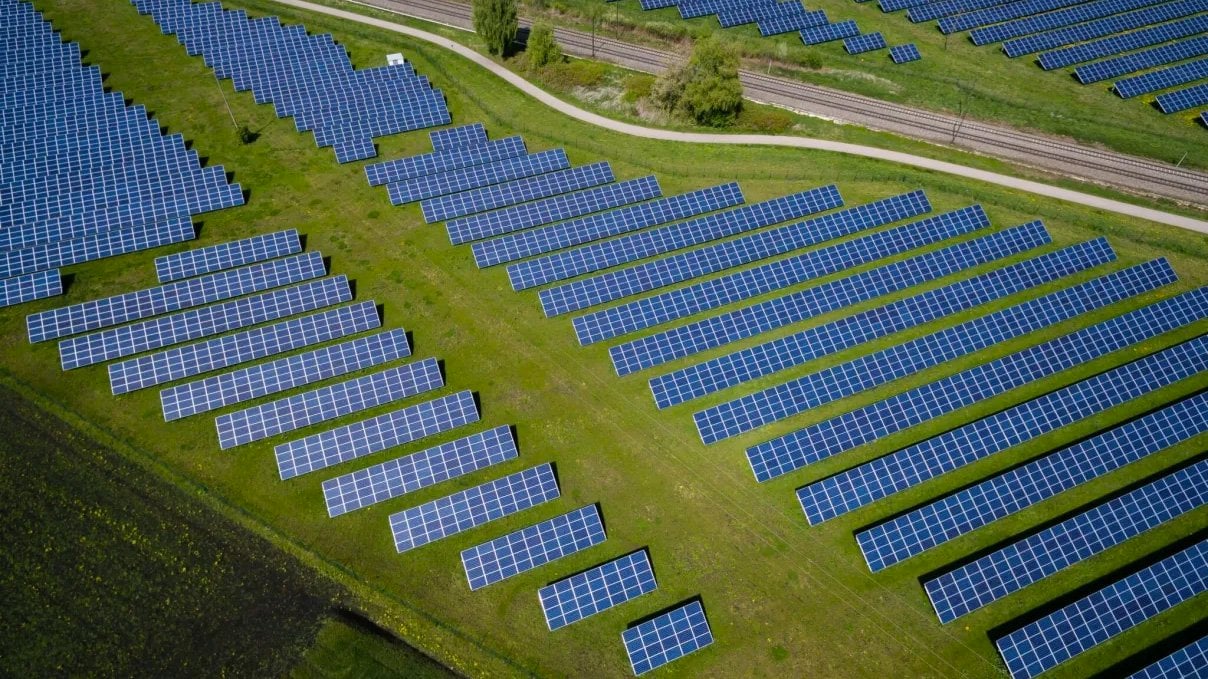June heatwave in Texas demonstrated how climate-forward technology kicks into gear during a weather emergency. As temperatures exceeded 110 degrees Fahrenheit in several cities, air conditioner usage helped push electricity demand to new records. At the same time, the heat reduced the power output from coal, natural gas, and even nuclear plants because they became harder to keep cool.
Such a scenario might have resulted in blackouts if the state’s installed base of wind and solar generation hadn’t risen to the occasion to take up the slack. In fact, sunny skies and steady winds pushed electricity from renewables to record levels just when they were most needed. Moreover, the state’s grid controlling authority tapped into a brand-new backup battery system (completed less than a week before the outage) to compensate for the sudden drop in nuclear power.
The transition from carbon-based power sources to new ones that go lighter on the environment has three key components. Significantly increasing green electricity generation will remove fossil-fuel burning systems from transportation, manufacturing, and home life. Where fuel must be burned, carbon emissions can be greatly reduced by converting to hydrogen fuel. Finally, new technologies can help identify the sources of the most harmful emissions and even remove them from the atmosphere.
Seven breakthrough technologies are coming to meet these challenges.
1. Reengineer Electric Motors
To replace a gas engine car, you have to match or exceed it in power. The key to that, today, is motors built with rare-earth metals. With exotic names like neodymium, dysprosium, terbium, and praseodymium, rare earth elements go into so-called permanent magnets. They have persistent magnetic fields and are considered more powerful and efficient for EVs than induction motors, which require electricity to generate magnetic fields. (Although the latter are cheaper and easier to produce.) Eighty percent of EVs have permanent-magnet electric motors, according to industry research firm IDTechEx. And that’s a problem.
Rare earth elements are not particularly rare, but they are not packed neatly into veins that can easily be mined. Getting enough requires digging up and sifting a lot of dirt, a process that is expensive and damaging to the environment. Ditching rare earths would lessen the environmental burden, as well as dependence on China, which dominates the global market.
Tesla, the world’s top EV maker, has focused on permanent-magnet motors for its latest generation of cars, including the Model Y, which became the best-selling car in the world in early 2023. But at Tesla’s March 1 Investor Day presentation, the company announced that future drive units will use permanent magnets that do not incorporate rare earth elements. Some analysts are skeptical because likely alternative technologies are either heavier or many years away from production. But there are some promising signs.
Researchers at the U.S. Department of Energy (DOE) laboratories are rearranging the microstructure of magnets to make them more powerful, without the need for rare earth materials. The process involves reducing magnetic manganese bismuth material into powder form and introducing a nonmagnetic coating that prevents the particles from interfering with each other. The team is working with Ohio-based PowderMet to develop techniques of mass producing the magnets for electric motors, as well as generators in industrial wind turbines.
In November 2022, the DOE awarded Minneapolis-based Niron Magnetics a $17.5 million grant to develop its iron nitride magnet design with a number of industrial partners, including Volvo. Rare-earth materials consultancy Addams Intelligence points out that other manufacturers of EV motors, including Japan-based Proterial, are also working on permanent rare-earth-free magnet designs.
2. Go With the Flow Batteries
Renewable energy is also called variable energy because it’s affected by changing weather conditions, not to mention nightfall in the case of solar. So, any electric grid with significant amounts of variable energy requires readily available “baseline” power sources such as fossil fuel or nuclear plants—or backup energy storage—to fill in.
Right now, utilities are relying on larger lithium-ion batteries that require special cooling systems and become significantly more expensive when scaled up. They must be deployed in large numbers and discharged sequentially in order to provide backup power over long periods.
A promising alternative is the development of flow batteries, which are scalable to large grid energy storage and can discharge electricity over 10 hours or more. The key feature of flow batteries is that they incorporate two tanks of electrolyte fluids—one containing a charge, the other not—that interact through a system of pumps to discharge electricity when needed.
Kara Rodby, a technical principal at Volta Energy Technologies, a venture capital firm specializing in energy storage, says flow batteries have definite advantages for large-scale storage applications. However, “the value proposition of long-duration energy storage is complicated because the systems are hard to make money out of,” she says. “They bring an important, not yet easily quantified—or at least not yet priced—value of resiliency.“ Rodby, who studied flow battery technologies as a doctoral student at MIT, says grid storage demand is largely dependent on deeper penetration of renewable energy.
Yet another issue is that the electrolytes of the most capable flow batteries use vanadium to carry the charge. Vanadium does not degrade as quickly as other materials; however, it is relatively expensive, with the most productive mines in China, Russia, and South Africa.
Oregon-based ESS Inc. is developing an all-iron utility-scale flow battery that doesn’t require vanadium. According to ESS, the benefit is a great reduction in cost, at the expense of capacity.
The company has sold a number of units for industrial-scale and small grid-scale storage applications. In June, ESS announced it was developing a 50 MW/500 MWh iron flow battery system (enough to power about 800 U.S.-style homes for 10 hours) with LEAG, a German power company. LEAG aims to convert its Boxberg Power Station from a coal plant to a massive one-gigawatt solar farm, with additional ESS iron flow batteries for storage.
3. Pursue the Nuclear Option
Targets for cutting greenhouse emissions in half by 2030 and to zero by 2050 will not be possible without a massive switch to non-emitting power sources. “There is a common belief among climate advocates that storage technologies combined with renewables is sufficient to solve our climate crisis, but we strongly disagree with this opinion,” says Frank Hiroshi Ling, chief scientist at the Anthropocene Institute, a California-based clean-tech think tank. “Indeed, storage technologies will be important, but they must be complemented by nuclear generation if we are going to have a real impact on climate,” he says.
Even former nuclear skeptics have been moved to reconsider the technology for achieving this goal. But the United States has seen only three commercial power reactors come online since 2000. Unit 3 of the Vogtle Electric Generating Plant in Georgia began commercial operation in July, while Unit 4 has received the Nuclear Regulatory Commission approval to start by the end of the year. There are no other gigawatt-scale reactors under construction.
Stepping into the void are companies pursuing breakthroughs in small modular reactors (SMRs) that are intended to generate electricity in the tens to hundreds of megawatts per unit. The International Atomic Energy Agency says that more than 70 designs are being developed around the world.
SMRs stand out for innovative cooling and safety subsystems. Some use water, while others are gas cooled using helium or carbon dioxide. A promising technology uses liquid metal (sodium or lead) which improves reactor performance and extends fuel life. The cooling systems for all designs use natural processes of gravity, convection, and evaporation, rather than complex mechanical subsystems that are more prone to problems and even failure.
Modular reactors are also designed to be produced economically in relatively large numbers. “Historically, nuclear power plants have been built one at a time, and they have all been different,” says Adam Stein, director of nuclear innovation at the Breakthrough Institute, a California-based environmental research organization. But facilities employing a given reactor type will be functionally identical—potentially easing the permitting process. Indeed, the U.S. Nuclear Regulatory Commission issued its first certification for a SMR design to NuScale Power in January.
Stein says that while the NRCs willingness to adopt new rules is welcome, the process will have to be even more dramatically streamlined to enable deployment of the hundreds of new SMRs needed over the next 20 years to meet energy decarbonization targets. “Changing that paradigm needs to come from industry as much as it has to come from the regulator,” says Stein.
4. Green the Hydrogen
If decarbonized electricity generation is the cornerstone of an emissions-free future, breakthroughs in hydrogen production provide a key way to store and move that energy.
The DOE is currently managing about $8 billion in funding for public-private partnerships to develop up to 10 so-called “hydrogen hubs” across America. Each selected site is required to demonstrate the production, processing, delivery, storage, and end-use of clean hydrogen.
The trick here is to produce hydrogen cleanly. This is not an easy task. According to MIT, about 95% of hydrogen is produced from fossil fuels—typically using steam to liberate it from natural gas. This releases 830 million metric tons of CO2 each year to produce just 74 million metric tons of hydrogen. For hydrogen to play a role in a zero (or near zero) carbon future, ways must be found to produce, transport, and store it more cleanly.
One remedy is using electricity to split hydrogen from water molecules (in a process called electrolysis), rather than from natural gas. This would ideally be powered by renewable energy sources such as solar and wind. But there are other options.
One interesting proposal would use SMRs in a carbon-free process, using both electricity and steam. Researchers working with NuScale are developing the process under a grant from the U.S. DOE.
Meanwhile, researchers at Stanford University and Shell Global Solutions International propose capturing and storing the carbon that comes from producing hydrogen with natural gas. The CO2 would be stored in depleted oil and natural gas reservoirs underground.
A recent report from the International Energy Agency (IEA) says the lack of universal standards is hampering the development of a clean hydrogen economy. The agency is supporting methodologies for calculating greenhouse gas emissions intensity from hydrogen production, prepared by the International Partnership for Hydrogen and Fuel Cells in the Economy (IPHE). The IEA hopes international standards bodies will codify the IPHE definitions by the end of 2024 and so improve investor confidence in clean hydrogen projects.
5. Move Hydrogen Efficiently
While some infrastructure for delivering hydrogen to customers exists, this is woefully inadequate for transporting it to the vastly expanded range of users in new sectors that would be required for a hydrogen economy. One solution is to use the existing natural gas transportation infrastructure, rather than build a separate system from scratch.
But it’s not a simple swap. On the economics side, hydrogen is only 12.5% as dense as natural gas under the same conditions, so you have to move a lot more of it to provide the same amount of energy. You can compress or liquify hydrogen to save space, but that adds significantly to the final delivery cost, and consumes more power. According to BloombergNEF, shipping hydrogen would be five to seven times as expensive as shipping liquified natural gas.
The DOE’s National Renewable Energy Laboratory (NREL) is working on ways of improving the economics, such as blending hydrogen in with natural gas to ride along existing pipelines. (The gasses could be separated at the destination.) But hydrogen poses more challenges. As the smallest molecule in nature, hydrogen has a tendency to permeate solid metals, which may make pipelines more susceptible to metal fatigue and cracking. Also, the long-term effects of hydrogen on plastic piping, valves, fittings, and other infrastructure components are not well understood. The Hydrogen Materials Compatibility Consortium, an organization formed by U.S. national laboratories, academia, and industry, is studying the effects of hydrogen on various materials to assess how hydrogen-natural gas blending and various hydrogen storage and transfer technologies would work over time.
6. Corral the CO2
While preventing emissions in the first place is ideal, capturing them at the point of creation, or even after they have been freed, are also options. The CO2 could then be stored, or “sequestered.”
The most widely deployed carbon capture and sequestration (CCS) systems are for snagging CO2 from petroleum and other industrial sites, and then pumping the gas underground. According to IEEE Spectrum, there are only about three dozen such installations at power plants and factories around the world. These applications are straightforward in that the gas to be captured is already concentrated and under pressure.
Much more difficult is pulling out carbon already released into the air, where it’s far more diluted. (Carbon dioxide makes up just 0.04 percent of the atmosphere.) So-called “direct air capture” (DAC) technology offers a way of removing carbon dioxide that is already affecting the climate.
The problem has been making such systems economically viable. Massive amounts of air must be drawn into DAC facilities using huge fans and passed through filters or chemical solutions to trap the CO2. That takes a lot of energy, as the screening materials must then be heated to remove CO2 so it can be stored. The International Energy Agency says that 27 DAC plants are in operation around the world, but these capture only about 0.01 metric tons of CO2 per year. That’s far short of even the IEA’s modest net-zero pathway goal for capturing 75 metric tons of CO2 annually via DAC by 2030.
The U.S. National Institute for Standards and Technology (NIST) is using computer models to help develop new materials for carbon capture, so that filters can remove CO2 more efficiently and stand up better to the heating process. According to the NIST, the traditional way of screening materials is to synthesize a prototype sample and then test it in the lab. This is slow going. Computer simulations enable researchers to evaluate the properties of prototypes virtually, which speeds up the discovery process. Pharmaceutical researchers use similar “combinatorial chemistry” modeling to evaluate promising new drug possibilities. A successful breakthrough in CO2 screening could make DAC practical for reducing carbon in the atmosphere.
7. Find the Methane
Methane is a much more potent source of greenhouse warming than carbon dioxide. According to MIT, upon emission, a ton of methane traps about 100 times as much heat as a ton of CO2. Methane does break down over time, but even over 100 years, that original ton of methane would trap about 28 times as much heat as the ton of CO2. Agriculture is the largest source of methane emissions from human activity, followed by the energy sector, where it’s the main component of natural gas. Landfills also spew methane.
More than 100 countries, including the United States, have pledged to cut methane emissions by 30% by 2030. “A key component of that is requiring oil and gas operators to regularly look for and stop escaping emissions,” says Michael Greenstone, director of the Energy Policy Institute at the University of Chicago. “Yet verifying that operators have done this, by inspecting oil and gas facilities, is expensive and time-consuming, and currently there simply aren’t enough regulatory resources to inspect every one of them, even once a year.”
Greenstone and his University of Chicago colleagues teamed up with the University of Warwick in the UK to develop AI tools to assist in the problem of identifying methane emissions. Working with air quality regulators in Colorado, the team used its AI tool to evaluate Colorado’s historical inspection data that documents which oil and gas facilities had leaks, combined with information on their equipment and layout. “The model’s predictions have resulted in an almost threefold increase in the probability of finding unintended emissions during an inspection,” says Greenstone.
The International Space Station (ISS) is providing a unique platform for identifying methane polluters from orbit. Turns out a sensor on the ISS—originally designed for mapping minerals in dust emanating from deserts—can also identify clouds of methane from their distinctive infrared signature. NASA officials say scientists have been able to identify scores of “super emitters” of methane, such as oil fields and landfills, using the sensor.
Similar sensors on less-expensive small satellites, combined with lower launch costs, could enable persistent coverage of the Earth, helping lock down sources of greenhouse gasses.
Advance the Agenda
There is great tension between legacy technologies that power our civilization but harm the environment, and zero-carbon technologies that promise to arrest and reverse climate change but are largely unproven. We are in the middle of a historic transition perhaps more significant than the Industrial Revolution. All such ages bring turmoil The good news is that turmoil leads to progress when the focus is on cooperation and creation. The breakthrough technologies described above are being made possible by people from all over the world bringing their vision, intellect, labor, and capital to bear on reducing humanity’s impact on the Earth—while enabling a more prosperous future.
For more on climate, join us at our upcoming event on September 20th in New York City: Techonomy Climate NYC: Solutions That Scale.















